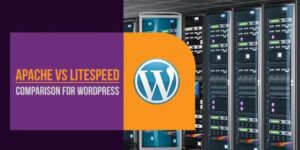
Building a SaaS (Software as a Service) product can be an exciting journey, but launching with a full feature set might not always be the best approach. This is where the concept of a Minimum Viable Product (MVP) comes in handy. An MVP allows SaaS businesses to test the market, gather feedback, and refine their product with minimal risk and investment.
In this blog post, we’ll walk you through the step-by-step process of how to create an MVP for your SaaS product, ensuring you build a scalable and successful solution.
Table of Contents
What Is A SaaS MVP?
Definition Of SaaS MVP:
An MVP for a SaaS product is a lean version of your software that includes only the essential features necessary to solve the primary problem for your users. The goal of the MVP is to deliver the core value proposition of your SaaS product while minimizing costs and time spent on development.
By focusing on core functionality, you can quickly validate your SaaS product idea, collect feedback from early adopters, and make data-driven decisions for future development.
Why Is Creating An MVP Crucial For SaaS?
Benefits Of SaaS MVP:
Creating an MVP before going full-scale offers several benefits for SaaS companies, such as:
- Validating Market Fit: Before committing resources, ensure there is demand for your product.
- Cost Efficiency: Save time and money by developing only essential features.
- User Feedback: Gather real-time feedback to improve and enhance your product.
- Risk Mitigation: Reduce the financial and technical risks associated with launching a full product.
“A SaaS MVP allows startups to test their hypothesis, minimize costs, and build a product that is aligned with user needs.”
Steps To Create An MVP For A SaaS Product:
Step 1: Define The Problem You’re Solving:
The first step in creating an MVP for your SaaS product is to clearly define the problem you’re trying to solve. Understanding the pain points of your target audience will help you focus on the core value of your product.
- Identify the pain points: What is the key issue your product aims to resolve?
- Narrow down the problem: Ensure the problem is specific and solvable with your MVP.
- Focus on the audience: Who are the primary users, and how will your product benefit them?
Step 2: Determine Your Value Proposition:
Once you’ve defined the problem, you need to clarify how your SaaS product will address it. The value proposition of your product is crucial in attracting early adopters. It should communicate why users need your product and how it will make their lives easier.
- Highlight core benefits: Focus on the tangible benefits your users will receive.
- Keep it simple: Avoid overcomplicating your message. The simpler, the better.
- Differentiate from competitors: What sets your SaaS product apart?
Step 3: Identify Core Features For The MVP:
With the problem and value proposition clear, it’s time to identify the core features your SaaS MVP will offer. These features should be directly tied to solving the primary problem and delivering value to users.
- Prioritize must-have features: Focus on functionalities that provide immediate value.
- Avoid feature bloat: Resist the temptation to add nice-to-have features at this stage.
- User-centric design: Ensure the features enhance user experience and solve the core problem.
Step 4: Build A Prototype Or Mockup:
Before diving into development, create a prototype or wireframe of your SaaS product. This step will help you visualize the user flow and identify any potential issues before coding begins.
- Use prototyping tools: Tools like Figma or Sketch can help create interactive mockups.
- Gather feedback: Share the prototype with potential users or stakeholders for early feedback.
- Refine based on feedback: Make necessary adjustments to the prototype based on user input.
Step 5: Choose The Right Technology Stack:
Selecting the appropriate technology stack is crucial for the success of your SaaS MVP. Your tech stack should be scalable, reliable, and suitable for the needs of your MVP.
- Backend technologies: Choose a robust backend framework like Node.js, Ruby on Rails, or Python.
- Frontend technologies: Opt for user-friendly frontend technologies such as React or Vue.js.
- Cloud hosting: Use cloud platforms like AWS, Google Cloud, or Azure to ensure scalability.

Step 6: Start Development With A Lean Approach:
Once your prototype is refined, begin the development process with a lean approach. The focus should be on building only the core features necessary for the MVP, without adding complexity.
- Agile development: Use Agile methodologies to ensure flexibility during the development process.
- Iterative progress: Release early versions and iteratively improve based on feedback.
- Maintain quality: Even though it’s an MVP, ensure the product is reliable and provides a good user experience.
Step 7: Launch The MVP:
Once development is complete, it’s time to launch your SaaS MVP. Keep in mind that your MVP doesn’t have to be perfect—it’s a learning tool that will evolve based on user input.
- Choose a soft launch: Start with a soft launch to test with a smaller audience.
- Marketing and promotion: Promote your MVP to attract early adopters and gather feedback.
- Monitor user behaviour: Use analytics tools to track user interactions and performance.
Step 8: Collect Feedback And Analyze Data:
After launching the MVP, the next crucial step is gathering feedback and analyzing data. The insights you collect will help guide future development and feature additions.
- Customer feedback: Engage directly with users to understand their pain points and suggestions.
- Data-driven insights: Use data from user interactions to understand how they are using the product.
- Iterate and improve: Based on feedback and data, make necessary changes to your product roadmap.
“The feedback loop is vital to SaaS MVP success. Use every piece of feedback to refine your product.”
Best Practices For SaaS MVP Development:
Focus On Simplicity:
One of the most common mistakes SaaS founders make is overcomplicating the MVP. The best SaaS MVPs are simple, intuitive, and focused on solving a single problem.
- Keep the user interface clean.
- Don’t overload with features.
- Ensure ease of use for early adopters.
Build A Scalable Infrastructure:
Even though your MVP is lean, it’s essential to think about future scalability. Building an MVP on a scalable infrastructure ensures you won’t face major issues when user demand increases.
- Use cloud-based solutions for hosting.
- Ensure your database can handle growth.
- Optimize for future development without rebuilding from scratch.
Engage With Early Adopters:
Your early adopters are your biggest asset when it comes to creating a successful SaaS MVP. Engage with them, listen to their feedback, and make improvements that cater to their needs.
- Build a community around your product.
- Incentivize feedback with offers or discounts.
- Iterate based on user input to improve retention.
Common Pitfalls To Avoid When Building A SaaS MVP:
Building Too Many Features:
The biggest pitfall in SaaS MVP development is adding too many features too soon. It’s easy to get caught up in the excitement of building a comprehensive product, but doing so can overwhelm users and delay the launch.
“Focus on the must-haves. Your MVP is about validation, not perfection.”
Ignoring User Feedback:
Once the MVP is launched, it’s easy to fall into the trap of continuing development without considering user feedback. However, doing so can result in building features no one wants or needs.
- Actively seek feedback.
- Adjust the product roadmap based on real user input.
- Don’t get attached to your ideas—let data guide decisions.
Sacrificing Quality For Speed:
While speed is essential in MVP development, sacrificing quality can backfire. If users experience too many bugs or a poor user interface, they may abandon your SaaS product altogether.
- Ensure the core functionalities work smoothly.
- Test thoroughly before launching.
- Deliver a reliable and stable product, even with minimal features.
Conclusion:
Creating an MVP for your SaaS product is a smart and efficient way to validate your idea, gather feedback, and reduce development risks. By focusing on the core problem and essential features, you can launch a product that resonates with your target audience and provides real value from day one.
Building a successful SaaS product doesn’t happen overnight, but with the right MVP strategy, you set the foundation for long-term growth and success. The key is to stay lean, listen to your users, and continually iterate until you find the perfect market fit.
Final Thoughts:
In the fast-paced world of SaaS, time is of the essence. Start with an MVP, refine your product through user feedback, and scale your solution as demand grows. This approach not only saves you time and money but ensures that your SaaS product is built with your users’ needs at the forefront.


















Be the first to write a comment.